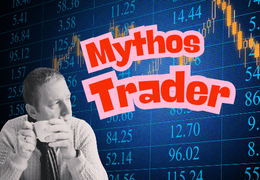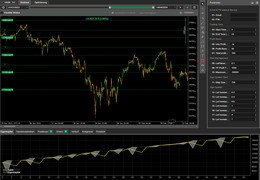Between reality and illusion If you want to know what trading really means—beyond luxury cars, piles of cash, and...
Search in blog
Blog categories
- FAQ – Your guide through the world of finance and technical facilities (2) click
- Daytrading Almanac (27) click
- Press release (23)
- Educational (26) click
- Projects (9)
- Chart analysis (39) click
- Trading bots for cTrader (11)
- AI in trading (5)
- Trading Strategien (11)
- Trading signals and stock market letters (46)
Latest posts

When it comes to traders, social media platforms often create a rather one-sided image: a young face smiling at the...

The TegasFX Instant Funding program sets a new standard for traders seeking quick access to capital without having to...

Backtesting trading strategies is an essential tool for traders who want to validate their methods across historical...

introduction In the world of trading, it can be challenging to balance the intense market activity and the rapid...
Popular posts





Featured posts





Photo gallery
No featured images
Archived posts
Top authors
-
 Christian Lill 70 Posts View posts
Christian Lill 70 Posts View posts -

-

-

-

Short Selling: A Historical Perspective and the Benefits Associated with It
The origin of short selling and the underlying idea
Short selling, known as "short selling," is a financial strategy that has been practiced for hundreds of years, with origins dating back to the 17th century. Historical records suggest that short selling was used as early as the early 1600s by Dutch traders to speculate on falling prices of tulip bulbs during the tulip mania. The practice has evolved over the years and is now a fundamental part of global financial markets.
The idea behind short selling is to profit from an expected decline in the price of a security. Investors who have a negative forecast for a stock or other asset borrow the security, sell it on the open market, and hope to buy it back later at a lower price. The difference between the sell price when borrowing and the buyback price is the short seller's profit, less any fees and interest on the borrowed security.
Benefits of Short Selling
Market efficiency and price discovery
Short selling contributes significantly to market efficiency by helping to correct overvalued stocks. Short sellers often conduct extensive analysis before entering a position. Their actions can thus serve as an indicator of overvalued areas of the market and help adjust prices to true value.
Hedging and risk management
For portfolio managers, short selling offers an effective hedging strategy to diversify and hedge risk. By taking short positions in overvalued or risky assets, they can reduce the overall risk of the portfolio, which is particularly beneficial in uncertain or volatile market periods.
Profiting in a bear market
During times of economic recessions or bear markets, short selling offers one of the few opportunities to actively make profits. While most investors take losses when prices fall, short sellers can take advantage of these market conditions to remain profitable.
Disadvantages of short selling
Unlimited risk of loss
While the risk of loss when buying securities is limited to the original investment, losses when short selling can theoretically be unlimited. If the price of the short-sold security rises contrary to expectations, the potential losses grow continuously.
Loan fees and repurchase difficulties
Short sellers must return the borrowed securities with interest, which incurs additional costs. It can also be difficult to buy back the securities at an acceptable price, especially if the market moves against the short position.
Market manipulation and short squeezes
Short selling can contribute to market manipulation, especially when done in a coordinated manner to artificially depress prices. In addition, a sudden increase in stock prices, known as a short squeeze, can result in short sellers being forced to buy back at high prices to avoid even greater losses.
Negative market sentiment
Frequent or massive short selling can affect market sentiment and weaken investor confidence. This can be particularly critical if the economic situation is already tense or the company is fundamentally strong but temporarily undervalued.
Regulation and insider knowledge
Strict regulations
Because of the potential risks and abuses, short selling is strictly regulated. Many exchanges require traders to comply with certain disclosure and reporting requirements, and in some cases short selling may be temporarily restricted or prohibited during market crashes or when stocks are extremely volatile.
Insider knowledge
Using nonpublic, material insider knowledge to short sell is illegal. Regulators are very vigilant about insider trading, and violations can result in severe penalties.
Liquidity and short selling
As mentioned above, short selling increases market liquidity by increasing trading volume. This is especially important for thinly traded stocks as it allows buyers and sellers to open and close positions more easily, which in turn promotes market stability and efficiency.
Impact on day trading and its opportunities
Opportunities in day trading
Day traders often use short selling to profit from short-term price movements. Since day trading requires quick entries and exits of positions, short selling allows traders to profit not only from rising prices but also from falling ones.
Risk management
For day traders, risk management is crucial and short selling must be handled carefully. The volatility that can arise from short selling requires precise timing strategies and adherence to strict stop-loss orders to avoid large losses.
Increased volatility
Short selling can lead to increased volatility, which presents opportunities for day traders but also increases risks. Day traders must therefore be prepared for sudden price changes caused by other market participants who also hold or close short positions.
Leave a comment
Related posts
 Day Trading Almanac Foreword
Day Trading Almanac Foreword
 History of day trading
History of day trading
 Choosing the right trading platform
Choosing the right trading platform
 Trading bots: revolution or risk?
Trading bots: revolution or risk?
